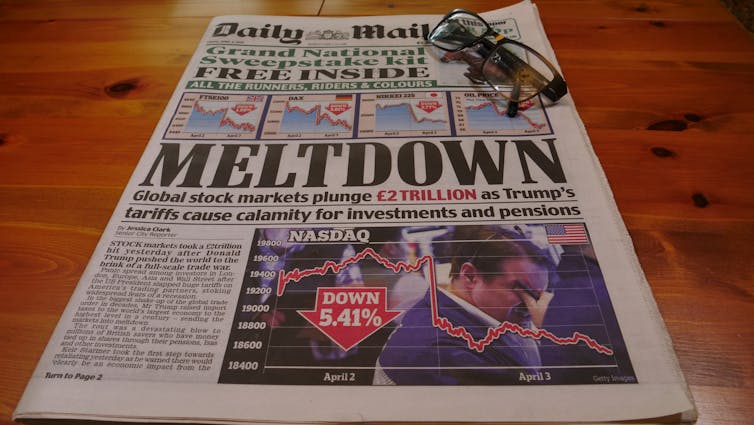Source: The Conversation – UK – By Alex Lord, Professor, Lever Chair of Urban Planning, University of Liverpool

Few issues ignite communities more fiercely than what to do with land. The prospect of releasing small portions of green belt land for housing developments, a windfarm proposal or plans for a new road can transform mild-mannered citizens into passionate advocates overnight.
This visceral connection between people and place perfectly illustrates the famous observation that “all politics is local”. In England, the principle that every citizen should be given the opportunity to “have their say” on planning matters is enshrined in law. Before any planning document is adopted, local authorities must give the public the chance to provide feedback.
The logic for this is based on a common-sense morality: before binding decisions are made about how an area might change, the local people who have to live with those decisions should be given the opportunity to endorse or reject that plan.
In practice this is a hugely cumbersome process. Local authorities have to make sense of thousands of comments. This prompted my colleagues and I at the University of Liverpool to begin thinking about how AI could be used to make this process more efficient.
Once a local authority publishes the relevant local planning document, every citizen, company, public, private or third sector organisation has the right to submit a written response. These may address the entire document or focus on a specific issue.
In all cases, the local authority is obliged to collate, comprehend and concisely summarise all public submissions. They will then decide whether the document requires amendments or if further evidence is needed to justify the proposals.
This creates an overwhelming burden for planning departments up and down the country. In high-development areas, submissions often number in the tens of thousands. And individual submissions range from a few sentences to over 100 pages.
Planners must read, absorb and synthesise all this information into a final report which will be used to make a decision. This report must fairly represent the aggregate views across all submissions.
Beyond the sheer volume of responses, human cognitive limitations and biases further complicate the process. Some submissions may be given greater emphasis than others. Recently read submissions are likely to have a greater influence on the reader than those reviewed earlier.
A digital solution
These challenges prompted us to explore alternatives. We partnered with Greater Cambridge Shared Planning – the planning authority for Cambridge City and South Cambridgeshire District Councils – to develop an AI-powered solution. Our tool, Plan AI, would read and summarise public submissions to the planning process.
In 2025, my colleagues and I conducted a real-world experiment. Three live public consultation exercises were processed in parallel – once by planners and once by Plan AI.
It took a planning officer just over 60 hours in total to download and process 320 submissions. Eighteen hours of this time was used to summarise each submission – a task that took Plan AI only 16 minutes. In that time, the AI tool was also able to create comprehensive reports identifying key themes, referenced sources and geographic analysis of the submissions.
A subsequent qualitative assessment found there to be no discernible difference in the quality of the summaries produced by the human planning officer and those by Plan AI. In fact, the general overview document produced by Plan AI is a significant addition to what would normally be produced. It included a geographic analysis of the origins of submissions – crucial information for planners to understand which communities and demographic groups were participating in the consultation.

pjhpix/Shutterstock
The future of planning
The UK government has set out a vision for local authorities to embrace AI for reducing administrative burden and improving the efficiency of government. For example, it recently rolled out an AI tool, developed with Google DeepMind, to digitise planning records.
The implications of experiments like these are far reaching. Planners can focus on their core expertise – assessing applications and supporting government priorities for housing, new towns and infrastructure renewal – rather than spending countless hours processing public comments.
AI can process vast amounts of text more consistently and comprehensively than humans. It can also identify connections between submissions that might otherwise be missed.
With the administrative burden drastically reduced, local authorities could potentially consult citizens more frequently across a wider range of planning issues, making planning even more democratic. Planners freed from paperwork could also dedicate more time to meaningful public engagement.
Of course, one danger with AI is that it could be used on the other side of the consultation, to generate a large volume of submissions in an attempt to over-amplify a particular point of view. However, AI tools could be used to defend against this.
PlanAI or similar programmes can generate an immediate summary of a comment submission, an ideal opportunity to insert a verification check that the submitter is indeed human. Putting the human back in the loop in this way reduces the potential for AI to be used to skew consultations.
By building the right tools and systems, we can create planning processes that are both more efficient and more responsive to citizen input – a win for democracy and effective governance alike.
![]()
PlanAI was developed under a paid contract with Greater Cambridge Shared Planning. At the time of publication, it is not sold or marketed to other governments or authorities, but may be so in the future. Alex Lord and the other researchers involved received funding from the UK government’s PropTech initiative and Greater Cambridge Shared Planning.
– ref. The government wants local authorities to embrace AI – here’s one way it could work in practice – https://theconversation.com/the-government-wants-local-authorities-to-embrace-ai-heres-one-way-it-could-work-in-practice-258449









